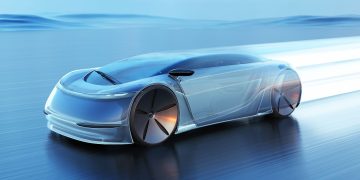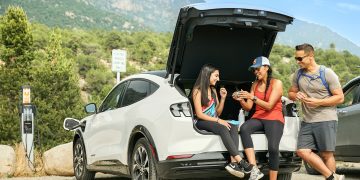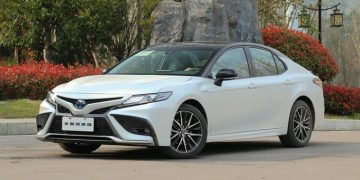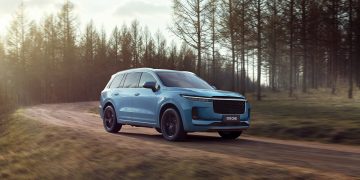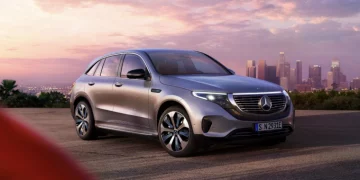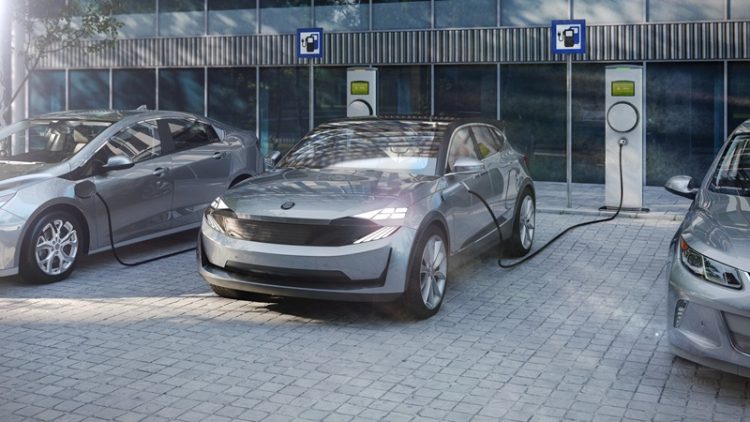Introduction: The Shift Toward Electric Mobility
The automotive industry is undergoing one of the most significant transformations in its history, driven largely by the rise of electric vehicles (EVs). As concerns over climate change, air pollution, and energy security increase, both established and emerging players in the automotive sector are adjusting their strategies to accommodate this paradigm shift. The move toward EVs is not only driven by regulatory pressure and consumer demand but also by the technological advances that make electric mobility more feasible, efficient, and attractive.
The rise of electric vehicles is reshaping the competitive dynamics in the automotive industry in multiple ways. Traditional automotive giants are faced with the challenge of adapting to new technologies, while new entrants are seizing opportunities to disrupt the status quo. This article will examine how the competitive landscape is evolving, exploring the strategic responses from traditional automakers, the rise of new players, and the ways in which companies are positioning themselves to succeed in this rapidly changing market.
Traditional Automakers: Adapting to the Electric Revolution
For many decades, the automotive industry was dominated by established players, such as General Motors, Ford, Toyota, Volkswagen, and BMW. These companies have vast experience, a strong brand presence, and well-established supply chains. However, the transition to electric vehicles is challenging these traditional players in several ways, forcing them to reevaluate their strategies and embrace new technologies and business models.
1. Transitioning from Internal Combustion Engines to Electric Powertrains
One of the most significant challenges facing traditional automakers is the shift from internal combustion engines (ICE) to electric powertrains. The transition involves not only changes in the design and manufacturing of vehicles but also rethinking the entire product development cycle. Automakers that have long relied on ICE vehicles must now invest heavily in the development of electric powertrains, batteries, and other essential components.
For example, Ford has committed to investing over $22 billion in electric vehicles by 2025, with plans to electrify its most iconic models, such as the Mustang and F-150. Similarly, General Motors has pledged to phase out gasoline-powered vehicles entirely by 2035 and has already launched its all-electric Chevrolet Bolt. These automakers are working to integrate electric powertrains into their existing vehicle platforms, as well as developing new EV-specific models to appeal to a broader customer base.
2. Building Electric Vehicle Infrastructure
In addition to vehicle production, traditional automakers must also focus on building the infrastructure necessary to support electric vehicles. This includes investing in charging networks, battery production facilities, and research into next-generation battery technologies. For example, Volkswagen has committed to building a massive charging infrastructure through its subsidiary, Electrify America, and has announced plans to build its own EV battery production plants in Europe and North America.
The need for infrastructure investment is a major competitive factor in the EV space. Automakers that can create a robust and accessible charging network will have a significant advantage in attracting customers who are hesitant about the range and convenience of electric vehicles.
3. Collaborations and Strategic Alliances
Recognizing the need to stay competitive, many traditional automakers are entering into partnerships and alliances with tech companies, battery manufacturers, and even startups to accelerate their electric vehicle development. For example, BMW has partnered with Northvolt, a Swedish battery manufacturer, to secure a supply of sustainable lithium-ion batteries for its future EV models. Similarly, Ford has joined forces with Google to integrate advanced AI and machine learning technologies into its vehicles.
These collaborations allow established automakers to leverage external expertise and resources, which is critical in a fast-evolving market where technological advancements are occurring at a rapid pace. Furthermore, by pooling resources, automakers can share the risks associated with developing new technologies and infrastructure.
New Entrants: The Rise of Disruptors
The EV revolution has created significant opportunities for new players to enter the automotive market and challenge the dominance of traditional manufacturers. Startups such as Tesla, Rivian, and Lucid Motors have captured the public’s attention and reshaped the competitive landscape with their innovative approaches to vehicle design, technology, and branding.
1. Tesla: The Market Leader and Innovator
Tesla is arguably the most prominent disruptor in the electric vehicle space. Founded in 2003 by Elon Musk and a group of engineers, Tesla has rapidly grown into the world’s leading electric vehicle manufacturer, capturing a significant market share and forcing legacy automakers to shift their strategies. Tesla’s success can be attributed to its innovative approach to EV design, cutting-edge battery technology, and its ability to create a strong brand identity around sustainability and performance.
Tesla’s dominance in the EV market has forced traditional automakers to rethink their approach to electric vehicles. Companies like General Motors, Ford, and Volkswagen are now working to develop competitive electric models that can rival Tesla’s offerings in terms of range, performance, and technology.

2. Rivian and Lucid Motors: New Entrants with Bold Ambitions
Other new players, such as Rivian and Lucid Motors, are also making waves in the electric vehicle market. Rivian, which specializes in electric trucks and SUVs, has garnered significant attention with its R1T electric pickup and R1S electric SUV. Backed by investors such as Amazon and Ford, Rivian aims to disrupt the traditional pickup truck market, which has been historically dominated by brands like Ford, Chevrolet, and Ram.
Lucid Motors, on the other hand, is targeting the luxury EV market with its Lucid Air sedan, which boasts impressive range and performance figures. With a focus on technology, design, and luxury, Lucid Motors is positioning itself as a competitor to Tesla in the premium EV market.
Both Rivian and Lucid Motors face significant challenges in scaling production and establishing brand recognition, but their presence in the market signals that new entrants are playing a larger role in shaping the competitive dynamics of the automotive industry.
3. Tech Companies Entering the Automotive Market
In addition to traditional automakers and startups, tech companies are also entering the electric vehicle market, further disrupting the competitive landscape. Companies like Apple, Google, and even Chinese tech giant Baidu have shown interest in developing autonomous electric vehicles and are partnering with established manufacturers to bring their ideas to life.
For example, Apple has reportedly been working on an autonomous electric vehicle project called “Project Titan,” which could revolutionize the way people think about transportation. Google’s parent company, Alphabet, has also made strides in the EV space through its autonomous driving unit, Waymo.
These tech giants bring a new level of innovation and resources to the industry, further intensifying the competition among automakers.
Changing Consumer Preferences and the Role of Brand Loyalty
As electric vehicles become more mainstream, consumer preferences are shifting. Many buyers are now considering factors such as sustainability, vehicle performance, and technological innovation when purchasing a vehicle. Traditional automakers are recognizing the need to adapt their branding and marketing strategies to cater to these changing preferences.
1. Sustainability and Eco-Friendly Values
One of the most significant factors driving the adoption of electric vehicles is the growing concern about climate change and environmental sustainability. Consumers are increasingly looking for vehicles that align with their values, and electric cars offer a way to reduce carbon footprints and minimize reliance on fossil fuels. As a result, automakers are increasingly marketing their electric vehicles as eco-friendly alternatives to traditional gasoline-powered cars.
2. Technology and Performance
In addition to sustainability, consumers are drawn to the advanced technology and performance features offered by electric vehicles. Features like autonomous driving, advanced infotainment systems, and over-the-air software updates have become key selling points for electric cars. As automakers race to develop and deploy these technologies, the competitive landscape becomes even more dynamic.
The Road Ahead: What Does the Future Hold?
The competitive dynamics in the automotive industry will continue to evolve as the electric vehicle market grows. Established automakers will need to continue investing in EV technology, infrastructure, and sustainability efforts to stay relevant. New entrants will also play a critical role in shaping the future of the industry, leveraging innovation and agility to capture market share. Ultimately, the industry will become more diverse and competitive, with a greater emphasis on technology, sustainability, and consumer preferences.
In conclusion, the rise of electric vehicles is reshaping the competitive dynamics of the automotive industry, creating new opportunities and challenges for both traditional players and new entrants. The market is becoming increasingly competitive, and only those companies that can innovate, adapt, and meet the demands of today’s environmentally conscious consumers will succeed in the long term.



